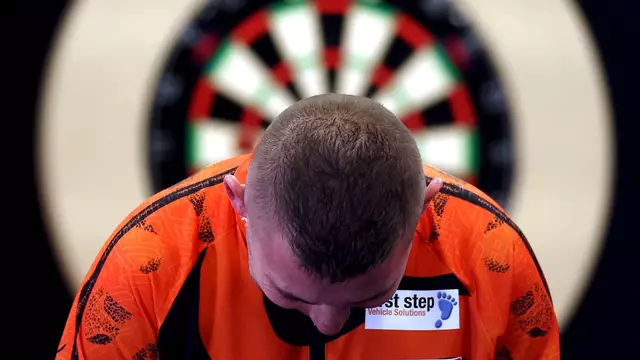
In a move that’s ignited fierce debate across the darts world, the World Darts Federation (WDF) has given the green light to a striking new dartboard that will make its high-profile debut at the upcoming Lakeside World Championships. Dubbed a “dark mode” dartboard by enthusiasts, this innovative design flips the script on the traditional color scheme that’s been a staple of the sport for generations. With predominantly black scoring areas contrasted against vibrant accents, the board promises enhanced visibility under modern lighting – but not everyone is convinced it’s a step forward.
The new board, developed in partnership with a leading manufacturer, features a radical aesthetic overhaul. Gone are the familiar light backgrounds with dark segments; instead, the treble and double rings, along with much of the playing surface, adopt a sleek black hue. The numbers remain bold and clear, and the wiring is ultra-thin stainless steel to minimize bounce-outs. But the real talking point is the bullseye: the outer bull is now black, while the inner 50-point bull retains a standout color for distinction. Proponents argue this creates a significant advantage for players aiming at the board’s heart. “The black bull gives a massive edge,” one seasoned competitor noted, explaining how the darker center reduces glare and makes precise targeting easier, especially in the intense spotlight of televised matches.
This isn’t just a cosmetic tweak – it’s backed by science and player feedback aimed at evolving the game for the better. Under the bright LED lights common in today’s venues, traditional boards can sometimes wash out or create reflections that hinder split-second accuracy. The darker palette is said to improve contrast, helping darts “pop” more clearly as they fly toward the sisal. High-quality Madagascan fibers ensure superior self-healing, meaning fewer holes and a longer lifespan even under the barrage of professional-level throwing. An advanced rotational number ring allows for precise adjustments, keeping the board looking pristine and balanced over time.
The decision comes as part of a broader sponsorship deal that will see these boards exclusively used across all matches at the iconic Lakeside Country Club, starting later this month. Officials hailed the collaboration as a game-changer. “Their boards are world-class and will give all of our players the perfect platform to showcase their skills,” a WDF spokesperson enthused, emphasizing how the upgrade aligns with the federation’s commitment to innovation and fairness. With reigning champions and rising stars set to compete on this new surface, expectations are sky-high for record-breaking averages and dramatic finishes.
Yet, for all the praise, the change has deeply divided the darts community. Traditionalists lament the departure from the classic look that’s synonymous with the sport’s heritage, particularly at Lakeside – the spiritual home of world darts for decades. “It just doesn’t feel like darts anymore,” grumbled one veteran player, echoing sentiments from forums and social media where fans have dubbed it everything from “ugly” to “a gimmick.” Critics worry that the black-dominated design could confuse newcomers or alter the psychological flow of a match, with some arguing the bullseye advantage tilts the playing field unfairly toward those who’ve practiced on the new setup.
Others point to practical concerns: in dimly lit pubs or amateur setups without pro-level lighting, the darker board might actually reduce visibility, potentially leading to more bounce-outs or misplaced darts. Early testers have reported mixed results, with complaints about initial adaptation periods where scoring felt off-kilter. “It’s like switching from day to night – your eyes need time to adjust,” admitted a pro who trialed the board, while acknowledging the long-term benefits for elite competition.
This split mirrors broader tensions in darts, a sport balancing explosive growth with respect for its roots. The PDC, the flashier rival circuit, has stuck with more conventional boards, heightening the contrast between the two worlds. For WDF loyalists, this bold step represents progress, attracting younger audiences drawn to the modern, edgy vibe. Supporters counter that darts has evolved before – from wooden blocks to sisal, from no lights to full arenas – and surviving change is part of what keeps the arrows flying.
As the Lakeside curtains rise, all eyes will be on how players adapt to this polarizing newcomer. Will it usher in an era of higher scores and fewer controversies, or become a flashpoint for backlash? One thing’s certain: in a game decided by millimeters, this “dark mode” revolution could redefine what it means to hit the bull. Whether it’s hailed as visionary or vilified as vandalism, the new-look dartboard has ensured that this year’s World Championships will be unforgettable – for better or worse.
Leave a Reply